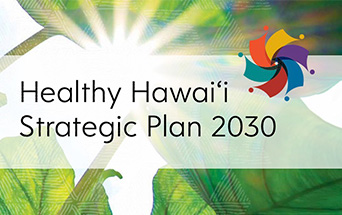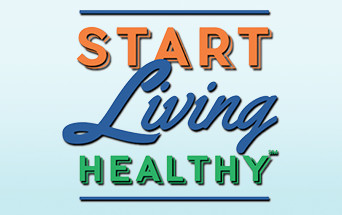Tobacco Prevention and Control Section
The Tobacco Prevention and Control Section (TPC) at the Hawaiʻi State Department of Health, is the official state government program addressing tobacco prevention and control in Hawaiʻi. TPC is primarily funded by the Centers for Disease Control and Prevention (CDC) – Office on Smoking and Health (OSH) – through its comprehensive National Tobacco Control Program (NTCP).
TPC provides the infrastructure for the state’s strategic efforts to promote policy, systems, and environmental change by fostering collaboration among the state and local tobacco control communities. TPC supports developing community capacity by funding local coalitions, and by providing oversight, technical assistance, and training to eliminate the health and economic burden of tobacco use across the state.
HAWAI’I TOBACCO PREVENTION & CONTROL PLAN 2030
 The Hawai’i Tobacco Prevention and Control Plan 2030 is the result of the input and collaboration of many organizations and individuals throughout the state. Building on a framework of achieving health equity for populations at greatest risk, the plan presents bold objectives and recommendations for strategies, outputs, and targeted outcomes.
The Hawai’i Tobacco Prevention and Control Plan 2030 is the result of the input and collaboration of many organizations and individuals throughout the state. Building on a framework of achieving health equity for populations at greatest risk, the plan presents bold objectives and recommendations for strategies, outputs, and targeted outcomes.
Hawai’i Tobacco Prevention and Control Plan 2030
OUR VISION:
A Hawai’i that is free from tobacco use, nicotine addiction, and exposure to secondhand smoke.

THE PROBLEM:
Tobacco use remains the leading cause of preventable death and disease in the U.S. and in Hawaiʻi. Cigarette smoking harms nearly every organ of the body and can cause cancer, heart disease, stroke, lung diseases, type 2 diabetes, and chronic health conditions.
The Tobacco Prevention and Control Section (TPC) adheres to the four main goals developed by the Centers for Disease Control and Prevention, Office of Smoking and Health (CDC/OSH) and the National Tobacco Control Program (NTCP) to guide its comprehensive tobacco control programs:
Every year in Hawai‘i tobacco:
- Kills 1,400 adults and contributes to 21,000 premature deaths in children and youth
- Costs each Hawai’i resident household $849 in state and federal taxes
- Costs $526 million in healthcare dollars directly attributed to smoking
- Costs $142 million in Medicaid costs related to smoking
The TPC adheres to the four main goals developed by the Center for Disease Control Office of Smoking and Health (CDC/OSH) and the National Tobacco Control Program (NTCP) to guide its comprehensive tobacco control programs:
Goal 1. Advance health equity by identifying and eliminating tobacco product-related inequities and disparities.
Tobacco use affects some populations more than others based on factors such as race and ethnicity, income, mental health and substance use, and sexual orientation.
Learn More >>
Goal 2. Prevent the initiation of tobacco use among youth and young adults.
Cigarette smoking by young people has immediate adverse health consequences, accelerates the development of chronic diseases across the life course, and can lead to addiction later in life. Teen vaping is an epidemic in Hawai’i and many teens who vape become adult smokers.
Learn More >>
Goal 3. Promote quitting tobacco among adults and youth.
Promoting tobacco cessation and helping tobacco users to quit reduces tobacco-related disease, death, and healthcare costs. Quitting tobacco use has immediate and long-term health benefits and all smokers should be encouraged to quit.
Learn More >>
Thinking about quitting? Call 1-800-QUIT-NOW or visit the Hawai‘i Tobacco Quitline
Or check out local resources: Clean Break – 2024 Tobacco quit resources in Hawai’i
Goal 4. Eliminate exposure to secondhand tobacco smoke to all populations.
Secondhand smoke can cause premature death and disease in nonsmoking adults, children, and even pets. There is no safe level of secondhand smoke and even brief exposure can increase the risks of heart disease, stroke, cancer, and heart attacks in adults. In children exposure elevates risk of severe asthma, ear infections, and sudden infant death syndrome (SIDS). Health Problems Caused by Secondhand Smoke | Smoking and Tobacco Use | CDC.
Learn More >>
Hawaii Specific Data and Information on Tobacco Use and Prevention
Hawaii Health Matters: Indicators: Tobacco Use Prevention & Control Tracker




